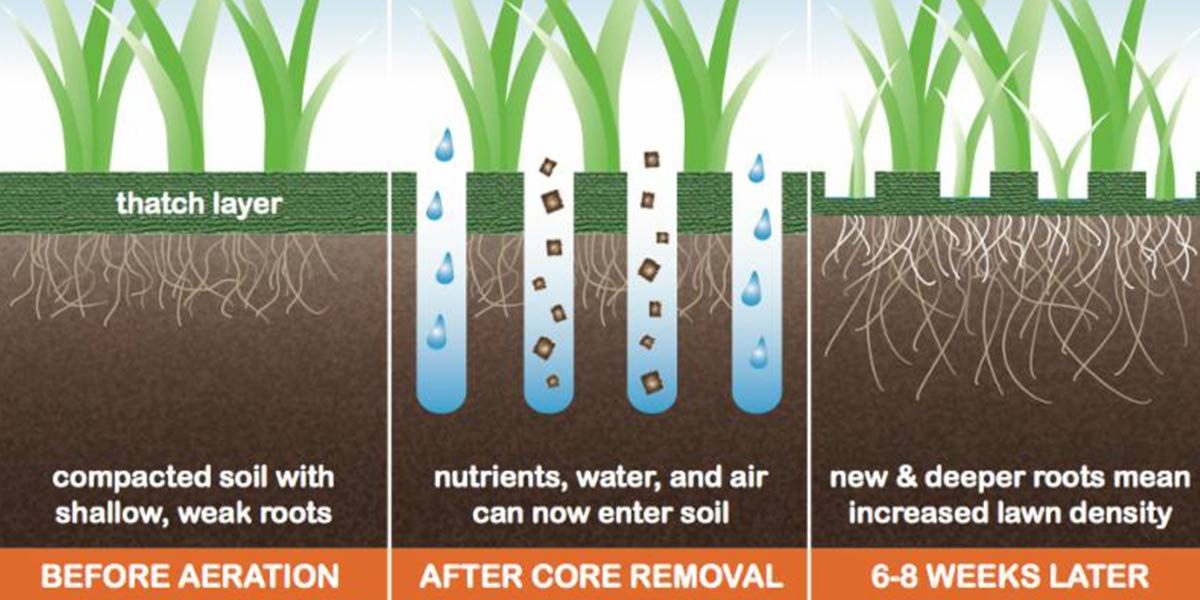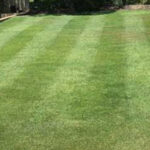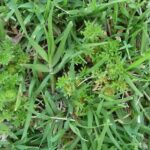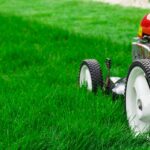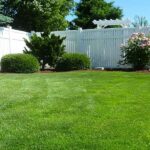Coring and verti-cutting are two very important practices when it comes to renovating and maintaining the health and vigour of your lawn. Although similar they both have different functions and are used to treat different aspects of your lawn’s health.
Coring is the physical removal of small plugs/cores from the soil and sward of the lawn. This is achieved using a motorised coring machine which punches 3 inch holes into the lawn, removing the plugs and leaving them on the surface of the lawn. Small holes in the surface of the lawn is the result of coring.The benefits from these holes in the lawn is probably one of the most important part of any renovation work carried out on a lawn. Coring relieves compaction, as the small holes allow water, oxygen and nutrients to instantly flood into the root zone.
Compaction can be caused from general wear of the lawn from kids playing on the lawn, cars parked on verges, mowing your lawn or hanging out the washing. Compaction:
• Decreases the amount of air in the root zone which is vital for root growth
• Decreases the water holding capacity of the soil, resulting in drought for the lawn
• Causes water to run off the lawn, wasting a valuable resource.
• Restricts the flow of nutrients in the soil and the effectiveness of fertilisers and wetting agents.
• Generally decreases the vigour of the lawn, and can result in death of the lawn.
• Leads to the build-up of an organic layer in the rootzone due to anaerobic condition/no air. The organic layer is call Black Layer and it results in a loss of turf vigour and decline in turf cover.
The best time to core your lawn is Spring and early Summer with an application of a wetting agent and fertiliser. This will drastically improve your lawn’s performance over the Summer months and will go a long way to improving it’s all year performance. Coring is also very beneficial in Autumn as it allows the winter rain to flow freely through the soil and not bog up on the surface. This will prevent anaerobic conditions in the rootzone and in turn prevent Black Layer forming. It also reduces the fungal diseases that can affect many lawns.
The main reason for Verti-cutting is the removal of thatch. Thatch is the accumulation of decaying grass litter in the soil’s surface and the matt layer of dead roots and rhizomes in the rootzone. These debris build up and create a thatch layer that is detrimental to a lawn’s health. Thatch:
• Acts as a sponge and prevents water flowing into the rootzone.
• Can cause rootzones to become anaerobic.
• Decreases the amount of micro-organisms in the soil. These break down organic matter into nutrients and make them available to the plant.
• Occurs naturally in all lawns but is generally increased by over-watering and applications of high level of nitrogen fertilisers.
A verti-cutter makes vertical cuts through the bottom of the grass blades to cut and remove thatch build up. It cuts into grass debris and horizontal stolons/runners and rhizomes and pulls them up to the surface. It takes skill to determine how much thatch should be removed. Too little and the results will be disappointing; too much and your lawn will struggle to recover. This is best left to an experienced operator.
Verti-cutting is best done during late Spring and early Summer, as the weather starts to heat up but before it gets too warm.
Verti-cutting will encourage new growth and improve the availability of water to the grass during Summer. It improves drainage during Winter, which prevents anaerobic conditions in the rootzone and in turn, improves the general vigour of the lawn.

